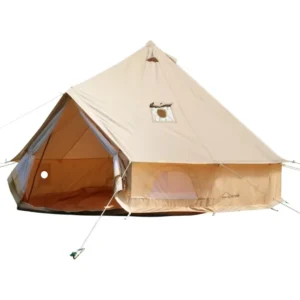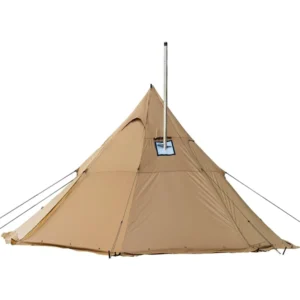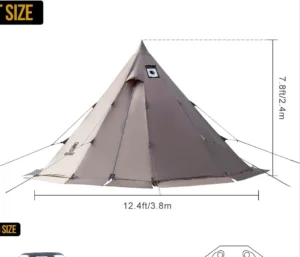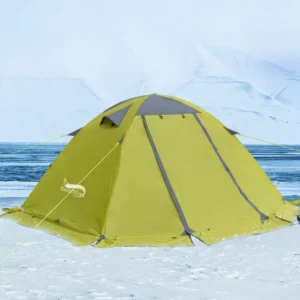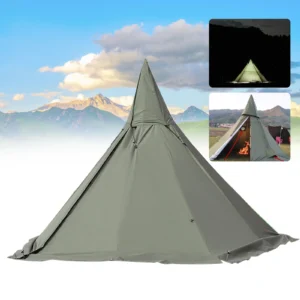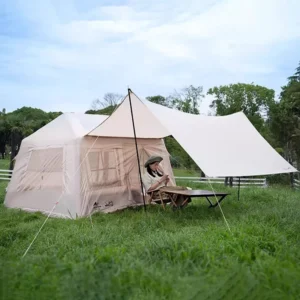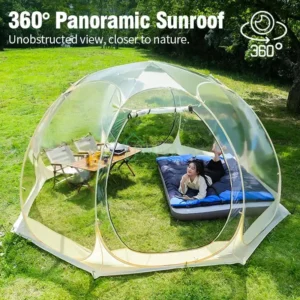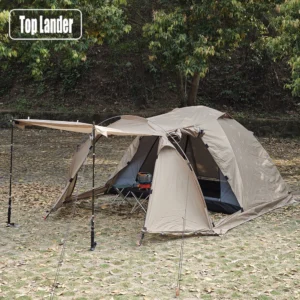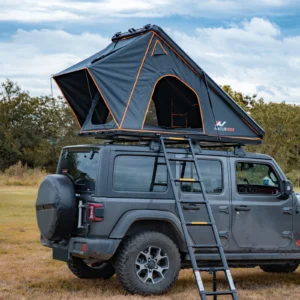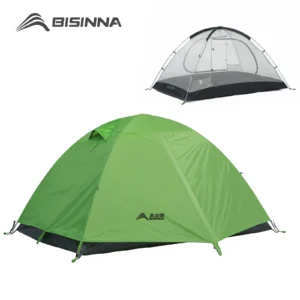4 Season & Winter 2 Person Tents
Conquer extreme cold with our 2-person, 4-season tents. Built tough for winter expeditions, they shield you from heavy snow and strong winds. Find your reliable expedition shelter.
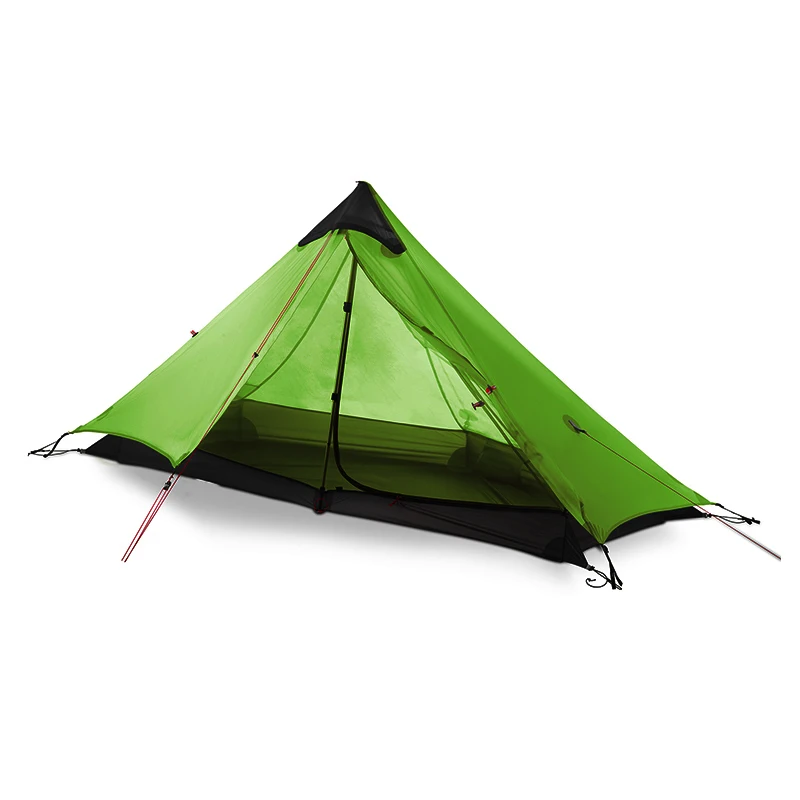
Showing 1–12 of 55 results
Canvas Camping Tent, Heavy Duty 4 Season Tent, Winter Camping Tent
$1,220.06 Select options This product has multiple variants. The options may be chosen on the product pageHeavy Duty 4 Season Tent, Winter Camping Tent
$638.69 Select options This product has multiple variants. The options may be chosen on the product pageHeavy Duty 4 Season Tent, Mountaineering Tent, Winter Camping Tent
$821.95 Select options This product has multiple variants. The options may be chosen on the product pageHeavy Duty 4 Season Tent, Trekking Pole Backpacking Tent, Winter Camping Tent
Price range: $424.76 through $440.41 Select options This product has multiple variants. The options may be chosen on the product pageHeavy Duty 4 Season Tent, Trekking Pole Backpacking Tent, Waterproof Camping Tent
$435.45 Select options This product has multiple variants. The options may be chosen on the product pageEasy Setup Camping Tent, Instant Camping Tent, Waterproof Pop Up Tent, Winter Camping Tent
$792.34 Select options This product has multiple variants. The options may be chosen on the product pageHeavy Duty 4 Season Tent, Mountaineering Tent, Winter Camping Tent
$870.40 Select options This product has multiple variants. The options may be chosen on the product pageDome Camping Tent, Heavy Duty 4 Season Tent, Winter Camping Tent
Price range: $568.41 through $677.18 Select options This product has multiple variants. The options may be chosen on the product pageDome Camping Tent, Heavy Duty 4 Season Tent, Waterproof Camping Tent, Winter Camping Tent
Price range: $618.15 through $618.73 Select options This product has multiple variants. The options may be chosen on the product pageDome Camping Tent, Heavy Duty 4 Season Tent, Winter Camping Tent
Price range: $600.07 through $619.92 Select options This product has multiple variants. The options may be chosen on the product pageHeavy Duty 4 Season Tent, Ultralight Freestanding Tent, Winter Camping Tent
$3,722.66 Select options This product has multiple variants. The options may be chosen on the product pageHeavy Duty 4 Season Tent, Waterproof Camping Tent, Winter Camping Tent
$3,876.14 Select options This product has multiple variants. The options may be chosen on the product page
Showing 1–12 of 55 results
Conquer the Cold: Essential 2-Person Winter Tents for Extreme Adventures
When venturing into snow-covered landscapes or high-altitude terrain, standard camping shelters simply won’t cut it. 4-season tents are critical fortresses against winter’s harshest elements—not just nice-to-have upgrades from their 3-season counterparts. While 3-season tents prioritize ventilation and lightweight design, true winter tents feature robust construction that withstands crushing snow loads, punishing winds, and temperatures that plummet well below freezing.
These specialized shelters create a crucial barrier between you and potentially life-threatening conditions, from -30°F (-34°C) mountain passes to raging blizzards that can deposit feet of snow overnight. At Explore Elements, we understand that 2-person winter expeditions demand the perfect balance of bombproof durability and practical portability—protecting you without weighing you down when every ounce matters.
Our carefully selected collection features premium options for serious adventurers, backed by detailed buying guidance to match you with the ideal shelter for your cold-weather explorations.
Engineered for Survival: Key Features of Premium Winter Tents
True winter camping tents differ dramatically from fair-weather shelters in fundamental ways. Their specialized designs incorporate reinforced structures, strategic geometry, and purpose-built materials that work together as complete systems engineered for extreme conditions.
While winter tents typically command higher prices—often ranging from $400 to $800+—this premium reflects critical engineering that can mean the difference between comfort and catastrophe when the weather turns hostile. For two adventurers sharing weight and space, these specialized shelters offer the perfect compromise between livability and practicality when facing winter’s worst.
Fortress-Like Construction: Pole Architecture & Frame Design
The backbone of any serious winter tent is its pole structure, with geodesic and semi-geodesic designs reigning supreme for their unmatched strength-to-weight ratio. These intersecting pole systems create multiple triangular supports that distribute stress evenly across the entire structure.
Premium winter shelters typically employ 7000-series aluminum poles in thicknesses between 9-11mm (compared to 8.5mm or less in 3-season tents), providing crucial stiffness without excessive weight. Some expedition-grade models feature carbon fiber components for ultimate strength at minimal weight.
The difference becomes clear when comparing attachment methods: while summer tents often use lightweight clips, serious winter models frequently employ sleeve systems that distribute pressure more evenly, preventing catastrophic failure when winds approach hurricane force.
Weather-Defying Fabrics: Materials That Stand Against the Elements
Winter-ready waterproof camping tents employ specialized fabrics with significantly higher denier ratings—typically 50-70D or greater—compared to the 15-30D common in lightweight models. This thickness provides critical tear strength when loaded with snow or battered by debris.
The waterproof ratings tell an important story as well. While fair-weather tents might offer 1200mm hydrostatic head ratings, proper winter shelters start at 1500mm and frequently reach 3000mm+, ensuring prolonged protection during multi-day storms.
Higher-end models often feature silicone-treated exteriors rather than polyurethane coatings alone, delivering superior water shedding and UV resistance that maintains performance over years of extreme use. Reinforced stitching, bartacked stress points, and strategic seam placement further enhance long-term durability when the elements are actively working to find your shelter’s weaknesses.
Critical Ventilation Systems: Combating Condensation in Cold Weather
Counterintuitively, managing moisture becomes even more crucial when temperatures drop. Winter camping creates a perfect condensation storm: warm, humid breath meeting freezing tent walls can quickly transform into indoor “snow” that compromises insulation and comfort.
Effective winter tents incorporate adjustable upper vents that allow moisture escape without sacrificing heat, complemented by low vents that create crucial airflow. The best designs feature multiple adjustment points that can be operated while fully gloved, allowing ventilation fine-tuning without exposure to the elements.
This thoughtful ventilation prevents the dreaded frost buildup that can literally “rain” on sleeping bags and gear when temperatures fluctuate.
Livability for Two: Space & Comfort Considerations
Quality 2-person backpacking tents designed for winter typically offer 28-35 square feet of floor space with peak heights between 38-45 inches. These dimensions might seem modest compared to summer camping shelters, but they represent a careful balance between habitable space and structural integrity.
Given the significant gear requirements for winter camping, generous vestibule space becomes non-negotiable. The best winter tents offer 8-15 square feet of protected external storage, keeping snow-covered boots, fuel canisters, and cooking equipment accessible but separate from your living quarters.
Strategic door placement—often featuring dual entrances—ensures that neither occupant becomes trapped or needs to crawl over their partner during midnight nature calls, a small but crucial consideration when multiple layers and bulky sleeping bags are involved.
Winter-Specific Features: Details That Make the Difference
True winter tents incorporate specialized features that reveal themselves only when conditions deteriorate:
– Snow skirts and flaps that prevent spindrift from infiltrating tent seams
– Oversized, glove-compatible zipper pulls and buckles that remain adjustable with numb fingers
– Internal gear pockets positioned to facilitate gear organization and quick access
– Reflective guy lines and attachment points that prevent midnight trips and falls
– Reinforced guy-out points that allow for maximum stability in changing snow conditions
These seemingly minor details make all the difference when setting up or breaking camp in subzero temperatures with limited dexterity and visibility.
Our Premium Selection: Expedition-Ready 2-Person Winter Shelters
Explore Elements curates winter shelters based on rigorous performance criteria, prioritizing models that have proven their worth in genuine expedition conditions. Our selection process emphasizes designs that have successfully weathered multiple seasons in variable alpine environments.
While premium winter tents represent a significant investment, their performance ceiling and longevity provide outstanding value when properly maintained. Our collection focuses exclusively on shelters that meet professional-grade standards for durability and reliability.
Find Your Perfect Winter Shelter: Filter Options
Our detailed filtering system helps match you with your ideal winter tent based on:
- Price Ranges: Mid-range expedition ($400-600), Professional grade ($600-900), Elite expedition ($900+)
- Weight Categories: Ultralight winter (under 5 lbs/2.3 kg), Standard expedition (5-7 lbs/2.3-3.2 kg), Full protection (7+ lbs/3.2+ kg)
- Design Types: Full geodesic (maximum strength), Semi-geodesic (balanced), Tunnel (space efficient)
- Key Features: Vestibule size, pole material, ventilation systems, door configuration
- User Experience: Verified reviews from actual winter expeditions and overnight trips
Strategic Site Selection: Where to Pitch in Winter Conditions
Even the most robust tent requires proper placement to perform optimally. When establishing winter camp:
- Seek natural windbreaks like tree stands or rock formations, while avoiding potential avalanche paths
- Assess snow depth and consistency, aiming for locations where you can create a solid platform
- Consider proximity to resources like water and firewood while maintaining safe distances from hazards
- Plan for changing conditions, including wind direction shifts and overnight precipitation
- Create wind blocks using snow walls when natural protection is unavailable
Essential Winter Tent Accessories
Complete your winter shelter system with these critical additions:
– Footprint groundcloths specifically sized for your tent model
– Snow stakes, deadman anchors, and additional guy lines for variable anchoring
– Repair supplies rated for cold-weather use, including specialized tape that adheres in subzero conditions
– Ultralight backpacking gear organization systems to maximize internal space
Beyond Winter: Year-Round Versatility of 4-Season Tents
While purpose-built for extreme conditions, quality 4-season tents adapt surprisingly well to year-round use. Their robust ventilation systems can be fully deployed during warmer seasons, while their strength remains an asset during unexpected storms in any season.
For adventurers who explore diverse environments throughout the year, a single premium 4-season tent often provides better long-term value than multiple specialized shelters. However, those exclusively camping in mild conditions may find the weight and cost penalties of winter-ready designs unnecessary.
FAQs: Your Winter Tent Questions Answered
How much should I expect to invest in a quality 2-person winter tent?
Quality 2-person winter tents typically range from $400-$900, with premium expedition models reaching $1,000+. This investment reflects specialized materials, extensive testing, and robust construction necessary for extreme conditions.
What’s the difference between 3-season and 4-season tents?
4-season tents feature stronger poles (often more of them), heavier fabrics, reduced mesh, snow skirts, reinforced guy points, and more robust geometries designed specifically to handle snow loading and high winds.
How do I prevent condensation in my winter tent?
Manage condensation by using all available ventilation options, avoiding cooking inside, removing snow from gear before bringing it inside, and using moisture-wicking layers in your sleep system.
Can I use a winter tent in summer conditions?
Yes, most winter tents can be used year-round by maximizing ventilation options, though you’ll carry more weight than necessary for mild conditions. Models with removable inner tents or convertible panels offer the best warm-weather adaptability.
What’s the average lifespan of a premium winter tent?
With proper care and maintenance, premium winter tents typically last 7-10 years of regular use. UV exposure typically causes deterioration before physical damage in quality models.

